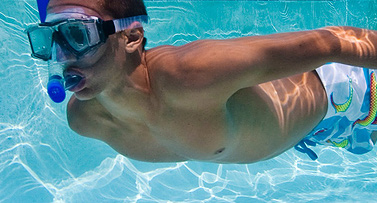24/10/2013Taking The Plunge: How To Pick An Inground Pool
If you have been thinking about getting an inground swimming pool, now’s the time to act. Most pool contractors offer discounts for pools purchased now for installation later in the season or very early next spring, periods when the pool business typically is slow.
However, before deciding on when to buy, you must first choose what to buy. Here’s a quick look at the three most popular types of inground pools:
Concrete
Concrete pools are the most popular—and most expensive—type of pool. They’re often called Gunite or Shotcrete pools; that’s because builders pump wet concrete through a hose and shoot it from a gun onto steel-reinforced walls. Once the concrete cures, it’s plastered, troweled smooth, and painted.
The benefit of concrete is that it can be formed to any size or shape for a truly custom pool. It generally takes between three and 12 weeks to install a concrete pool. That’s longer than other types, but concrete is considered the strongest, most durable type of pool. And unlike other inground pools, existing concrete pools can be rebuilt, refinished, enlarged, or updated.
Vinyl
Vinyl-lined pools are the second most popular type of inground pool, and their numbers are growing. Each pool is made from a one-piece flexible liner that fits into an excavated hole, and is then attached to a steel- or aluminum-framed wall. Vinyl pools come in a limited number of sizes and shapes. Most are rectangular, but L-shape and freeform liners are also available. The average-size vinyl pool can be installed in one to three weeks.
The big danger with a vinyl-lined pool is that pointy pool toys, playful dogs, and sharp objects can rip or puncture the liner. Damaged liners can be fixed, but it’s best to pay extra for a heavy-duty liner that’s at least 20 mm (millimeters) thick.
Fiberglass
Fiberglass pools are factory-molded into giant bowl-shaped shells, which are then set into the excavated hole by a crane. And while sizes and shapes are somewhat limited, the big advantage is that a fiberglass pool can be installed in as little as three days. It’s also the most affordable type of inground pool.
Another benefit is that fiberglass pools have a super-smooth gel-coat finish that’s extremely durable and nonporous, so these pools tend to use fewer chemicals than concrete pools. But before deciding on a fiberglass pool, be sure you’ve got plenty of space in your backyard for the crane to enter and maneuver. The area must also be free of any overhead wires or power lines.



